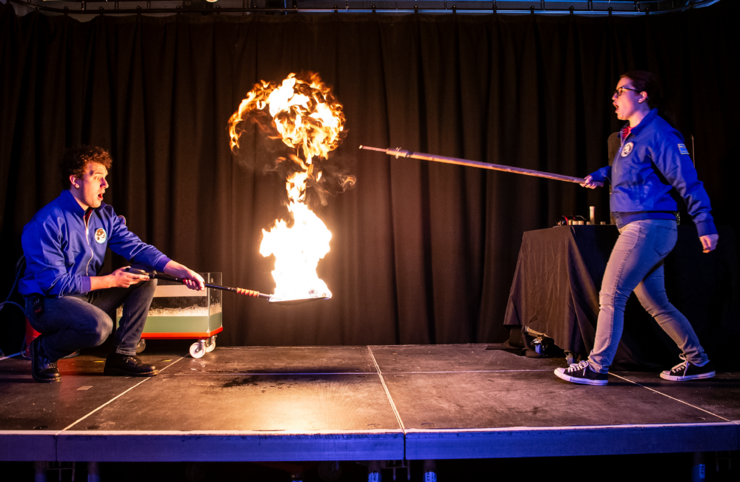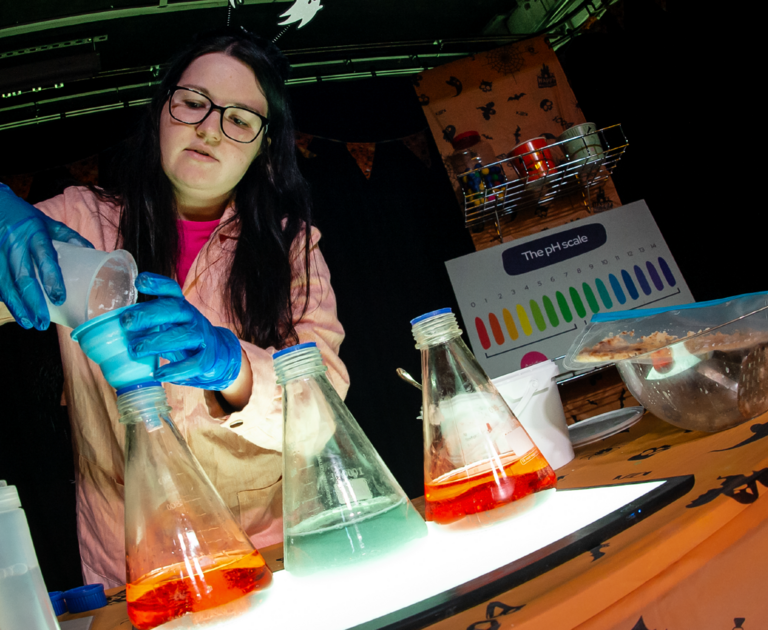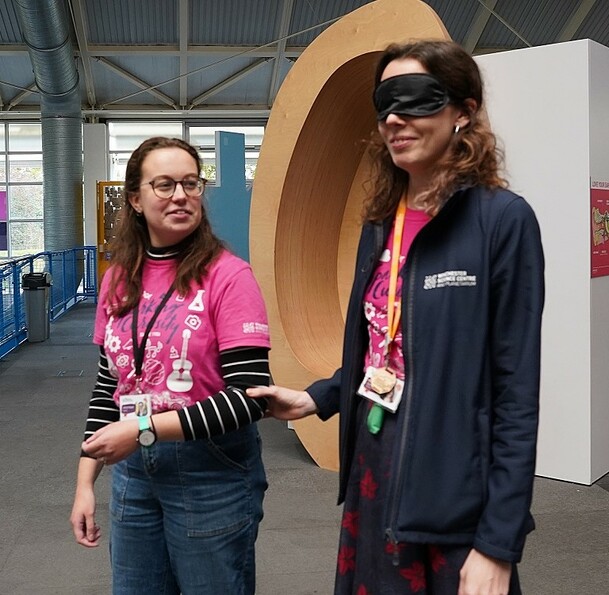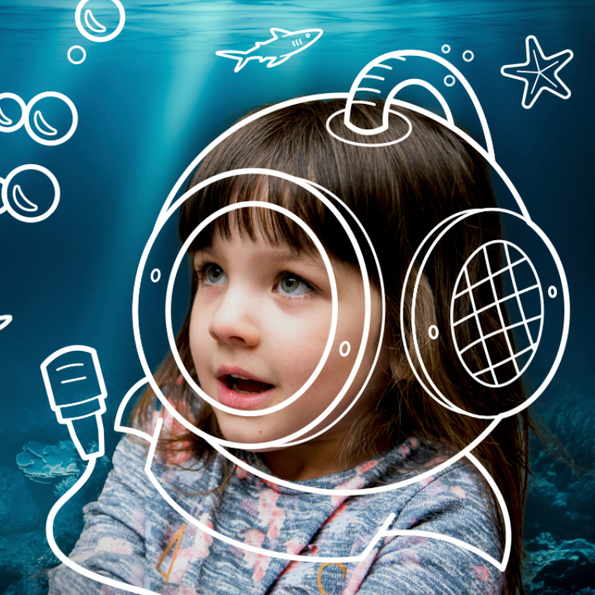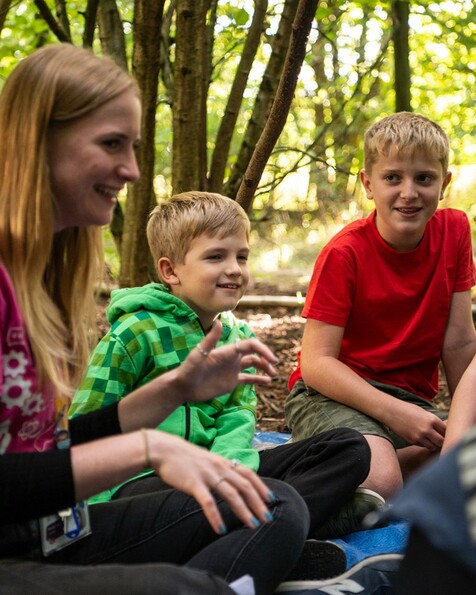How do we bring science and the arts to life at Winchester Science Centre? Our team are experts in science communication who create inclusive and interactive experiences. One of the ways they do this is in our exciting and explosive free theatre shows. Our fantastic Curiosity team use storytelling and the arts to make important topics fun and easier for children to understand.
In an article for Teach Primary, physics teacher, author, and science communicator, Alom Shaha, shares his reasons for why storytelling is a great way to engage children with science. He explains: “The methods of science – observation, experimentation, and thinking skills – can all be drawn out of stories.” He goes on to reference researchers Engel, Lucido, and Cook, who say the key to a good story is one that “provides rich context to make otherwise seemingly abstract ideas relevant in a personally meaningful way.”
Our Charity shares this belief, and we take a similar approach when creating experiences at our Science Centre and community outreach activities. Aly, our Public Curiosity Officer, is responsible for developing the live science elements of our public offer. This means creating engaging science shows, wow demos and hands-on activities that change throughout the year. In our science shows, families are able to explore a range of challenging science topics from how the human body works, to the fundamental basics of chemistry. To help children understand the content, Aly and our fantastic team of Inspirers create a story that the audience can follow and use visual props and interactive science to bring it all to life.
Aly explains: “In October half term 2023, we created a show called Can you stomach it? Which was all about the science of the human body. To make it interactive, I connected tubes together with cable ties which children could play with to understand what intestines look like and how big they are.”
When applying for the role of Public Curiosity Officer, Aly thought that not having a science degree might hold her back, but her Theatre in Education degree has given her the ability to think outside the box – a great skill to have as a Curiosity Offic
Aly says: “Ideas for stories to use in shows come from anything, I keep a lookout for current trends of things that kids like to give me inspiration. Kids love dinosaurs and space, so those shows are always easier to create. Our Christmas show in 2022 was Blast Off! It was all about making different types of rocket fuel. It included lots of cool experiments like propane bubbles and popping film canisters. That same year, we did a show called Lights, camera, science which explored how light is used in films. The inspiration for this idea came from Scooby-do episodes that use light to show ghosts.”
At Wonderseekers, we are passionate about using the arts to engage children in science. The arts provide us with the tools to engage children with science by placing it in a context they already understand. We’re proud to have used performance and storytelling in our Science Theatre shows and Planetarium for many years and we’re now exploring new ways to use the arts to engage children in conversations. Our goal is to use the arts to make science more accessible so that children feel empowered to use it to make a positive impact on the planet and our future.
